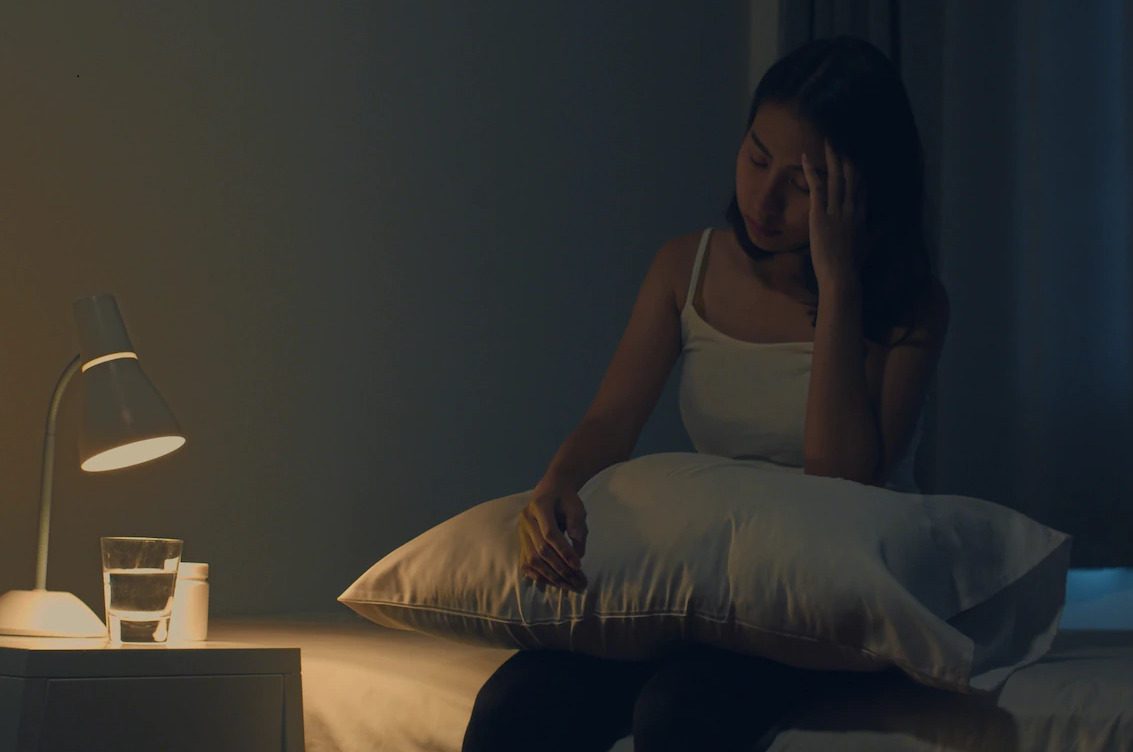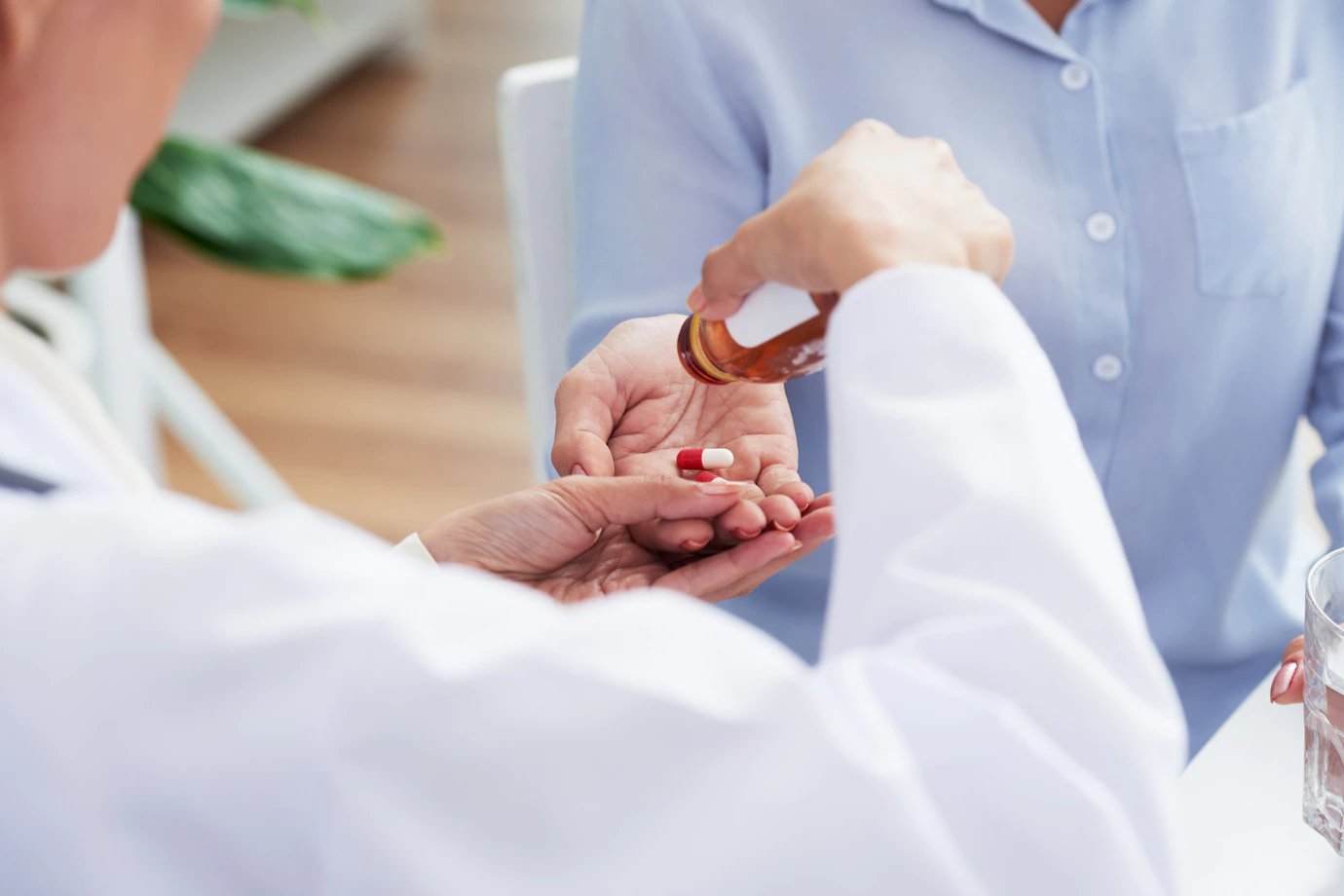Major Depressive Disorder: Causes, Symptoms, Treatments,
& More
Depression is a common mental illness that can be debilitating without treatment. Here’s what you need to know about depression. What is Major Depressive Disorder (MDD)?
Major Depressive Disorder is a mood disorder and serious mental illness. It is characterized by feeling down or depressed most days for at least two weeks. However, most episodes last longer than that. On top of the disturbance in mood, major depression includes other symptoms that impact how you feel, think, and function. For example, a big concern is that depression is linked with suicidal thoughts and behaviors. Although major depression can be debilitating when a person does not get treatment, effective treatments do exist. Major depression can be treated with medications, therapy, or both. When individuals get treatment, they can manage major depression and live full and productive lives.

Estimates show that more than 300 million people in the world live with depression. The World Health Organization ranks it among the leading causes of global disability. The American Psychiatric Association estimates that 23 million people in the U.S. live with depression in a given year.1 Prevalence is highest in people between ages 18 and 29. The rate is much lower in people over age 60, yet it is still present. There is consistent evidence that major depression is more prevalent in women compared to men. Some people may only have one depressive episode. However, the majority of people experience more than one episode over their lifetimes.
What Causes Major Depressive Disorder?
The exact cause of major depression remains unknown. In most cases, major depression occurs due to a complex combination of factors. This includes factors that are biological, genetic, environmental, and psychological.
There are some factors that add to the risk of having major depression during your lifetime. The list includes:
- History of major depression among first-degree blood relatives
- Presence of a non-mood disorder (e.g., anxiety, substance use, obsessive-compulsive disorder)
- History of trauma or adverse childhood experiences
- Poverty or marginalization
- Serious medical illnesses
- Neurotic or negative temperament

Life events that are upsetting and stressful can have a role in the onset of major depression in some people. Some examples of stressful life events include:
- Divorce
- Death of a loved one
- Loss of employment
- Factors related to childbirth
- Financial stress
- Serious or chronic medical conditions
- Legal problems
What is the Age of Onset and Course of Major Depressive Disorder?

Major depression may first appear at any age. However, onset is more likely around puberty. Incidence appears to peak in the 20s. There are very rare cases of first onset in the geriatric population. 1
The course of major depression varies across people who are diagnosed with it. Some individuals experience discrete episodes, full recovery between episodes, and a good deal of time between episodes. For others, the time between episodes is shorter and some symptoms linger between episodes. The good news is that 80% of people show recovery from a major depressive episode within 12 months and 40% show recovery as soon as 3 months after onset of an episode.
In addition, recurrence of a major depressive episode becomes less likely over time. The risk is higher in:
- People who have a history of multiple episodes
- Younger individuals
- People whose episodes are considered severe
A segment of individuals who at first are thought to have major depressive disorder later show evidence of having bipolar disorder. They may cycle between depressive and manic episodes. This is more likely to be the case in people who:
- Have onset during adolescence
- Have psychotic features as part of their illness
- Have a blood relative with bipolar disorder
What are the Signs and Symptoms of Major Depressive Disorder?
The signs and symptoms of major depression include mood changes as well as other changes. There are specific criteria around how long the symptoms last.

An array of symptoms may be observed over a two-week period of a major depressive episode. This list includes:
- Feeling down or depressed, most of the day, nearly every day (in children and adolescents this might be exhibited as irritable mood)
- Profound loss of interest in things that previously brought pleasure (e.g., hobbies, friendships, activities)
- Changes in appetite that lead to a good deal of weight loss or weight gain
- Trouble sleeping (insomnia) or, the opposite, sleeping a lot (hypersomnia)
- Feelings of agitation and restlessness or, the opposite, feeling really slowed down like you are walking through water
- Decreased energy or feelings of fatigue
- Feelings worthlessness
- Feeling excessive or undue feelings of guilt
- Trouble concentrating and making decisions
- Frequent thoughts of death or frequent thoughts that you would be better off dead (without a plan)
- Attempting suicide or having a specific suicide plan
Individuals will have a combination of symptoms, but not necessarily all the symptoms listed above. The same individual may have a different constellation of symptoms with each subsequent episode or may experience the same cluster of symptoms each time.
Major Depression and Suicide
Major depressive disorder is the psychiatric diagnosis that is most commonly linked with suicide. Not everyone who experiences major depression has suicidal thoughts or plans. Yet it is important to be aware of the risk. Additionally, there are many individual and relational factors that can protect someone from suicide risk.
- Individuals who are depressed and have these symptoms could be at particular risk for suicide.
- Extreme hopelessness
- Lack of interest in activities that used to bring pleasure
- Heightened anxiety and/or panic attacks
- Sleep disturbances
- Talking about suicide
- Having a prior history of suicide attempts
- Irritability and agitation
The 988 Suicide and Crisis Lifeline
988 is the new three-digit dialing code that routes callers to the 988 Suicide & Crisis Lifeline. It is formerly known as the National Suicide Prevention Lifeline. The 988 code is now active across the entire United States.
People can call, text, or chat to 988. They are connected to trained counselors who can:
- listen to any issues or problems
- understand how their problems affect them
- provide support
- connect them to resources if needed

How is Major Depressive Disorder Diagnosed?
As with any mental health disorder, screening and diagnosis is key to make sure that individuals who have depression can get the most effective treatments.
As a first step, people who show signs of depression should talk to their health care providers. A primary health care professional, for example, can assess your symptoms, establish a diagnosis, and discuss treatment options. They can bring in other professionals, such as psychiatrists and psychologists, if needed.
During a typical visit, a health care provider may ask questions to learn more about your symptoms. These may include topics such as:
- Symptoms that you experience and when they began
- Whether or not those symptoms interfere with your functioning (e.g., your responsibilities as an employee or student; or as a parent or spouse; or commitments to friends)
- History with similar symptoms and previous treatments
- Physical health problems
- Current medications or substance use
A health care professional’s assessment also includes issues such as physical health ailments, medications you take, substance use concerns, and more. They may conduct a physical exam and lab tests in addition to an interview. To assist in your assessment and diagnosis, it is a good idea to bring notes on what you have felt and when. It can also be very helpful to bring a loved one who can talk about what they observe.
How is Depression Treated?
Health care professionals treat major depressive disorder using one or both of these methods:
- Medications, also called psychopharmacology
- Therapy, also called psychotherapy
Each treatment plan is based on an individual’s symptoms, history, and immediate and overall goals for recovery. A treatment plan may start with medications and/or therapy and will likely be adjusted over time based on symptom change, side effects, and goals. It may take some time and tweaking to find the perfect treatment plan for someone. It is essential to work in partnership with your treatment team.

Medications
Psychopharmacology, or medication-based treatment, is often considered as part of a treatment plan for major depressive disorder. Prescribed medications work for many people who suffer from depression. These are called antidepressants. A mental health professional helps decide if antidepressants are the right course of action for your treatment plan. If you receive a prescription, be sure to ask exactly how you should take the medication.
Antidepressants typically take some time to start working. Individuals can begin to notice a benefit in as little as two weeks, but it often takes from four to eight weeks in most cases.10 Antidepressants often start by relieving the milder symptoms, such as appetite or sleep problems, before improving a person’s mood. Some people describe feeling that the medications protect them from becoming “too depressed.”
Treatment Plan
It can take some time to find the right medications and overall treatment plan for an individual. It depends on their specific case of depression. For example, some people do not fully respond to their first trial with antidepressants. In these situations, it is essential to revisit the diagnostic assessment, consider alternatives, and ensure that the person takes the medication consistently. For symptoms of depression that persist, a mental health professional may:
- increase the dose of the current antidepressant
- change to a different antidepressant
- possibly add another medication to the current antidepressant
Other medications like lithium, bupropion, or atypical antipsychotic medications (aripiprazole, brexpiprazole, or quetiapine) are some examples that can added to an existing antidepressant.
Here are a few important points to discuss with your treatment team as you begin antidepressants:
- Gather instructions regarding the medications themselves. This includes how much to take, when to take it, what to do if you miss a dose, what side effects can be expected, and more. Also get details on any interactions with specific foods, alcohol, substances, and other medications.
- Share if you are pregnant now or plan to get pregnant. Your treatment team can help you balance any potential risks to the fetus with the potential risks of not using antidepressants while you are pregnant.
- Make a plan to discuss details before you stop taking any medications or if you have side effects that bother you.
Therapy
Psychotherapy is one of the most common methods used to treat individuals who have depression. Also known as “talk therapy” or “counseling,” therapy helps people who have depression:
- understand the behaviors, emotions, ideas, and life events that contribute to their depression
- learn coping techniques and problem-solving skills
- regain a sense of control and pleasure in life
Therapy sessions take place with a trained, licensed mental health professional. They can be done either one-on-one or in group settings. It depends on a person’s unique needs.
The two most common forms of therapy for depression are cognitive behavioral therapy and interpersonal therapy.
Cognitive behavioral therapy (CBT) helps individuals change thinking and behavior patterns. CBT helps them identify and alter inaccurate perceptions that they may have of themselves and the world around them. The focus is on what is presently happening in an individual’s life. CBT helps people develop coping skills through exercises in the session and “homework” outside of sessions. Through this work, they can learn to change their own thinking, problematic emotions, and behavior.
Interpersonal therapy (IBT) focuses on behaviors and interactions with family and loved ones that directly impact a person’s mood. It helps individuals improve their communication skills within relationships, develop realistic expectations, improve self-esteem, and establish support networks. Through this work, IPT helps people deal directly with issues related to loss, relationship conflicts, and life identity/roles.
Brain Stimulation Therapy
There are alternative options to consider for some people who don’t respond to medications and therapy. This includes brain stimulation therapies such as electroconvulsive treatment or repetitive transcranial magnetic stimulation.
Electroconvulsive therapy (ECT) can be an effective treatment for major depression when people have not responded to other treatments. It is a procedure done under general anesthesia. The number of treatments for each person varies. Most people need 6 to 12 treatments, which are at first given three times per week.
Repetitive Transcranial Magnetic Stimulation (rTMS) is a non-invasive technique. It uses a magnetic field to stimulate certain areas of the brain. At first, sessions generally occur five days per week for several weeks.

What Can Individuals Do At Home To Help Their Depression?
People should consult with a health care professional and stay consistent with their treatment plans. These are crucial steps to treat depression. However, there are also strategies you can use to supplement a treatment plan. These strategies may help you further battle and manage your symptoms.
Here are some examples:
- Know the triggers that might make your symptoms worse — avoid those triggers, if possible
- Acknowledge warning signs for onset or worsening of symptoms — reach out for support as early as possible
- Fit in at least 30 minutes daily of any physical activity — for example, a walk around the block, vacuum your home, or climb the stairs in your building
- Revisit activities that previously brought you pleasure — for example, eat out, read, do a puzzle, call friends, or watch a movie
- Focus on self-care — for example, practice meditation, get a haircut, go for a massage, or get a manicure
- Set a sleep schedule with a consistent bedtime and wake-up times
- Eat healthy, nutritious meals and snacks
- Avoid alcohol and drug use
- Seek support from loved ones often
What Does Recovery From Depression Look Like?
The course of mental illness, including major depressive disorder, does not look the same for every person. It is not inevitable that mental illness simply gets worse with time. As stated above, the risk of recurrence of a depressive episode gets lower over time. This means that many people experience longer periods without an episode as they age. In fact, there are many examples in the literature and many first-person stories of recovery. Recovery is a process or journey through which individuals improve their health and wellness. People can lead self-directed lives and strive to live to their full potential. For some, this may include an absence from symptoms. For others, it might mean they find success living and coping with symptoms.
You should also follow the treatment plan developed in partnership with your health care professional. This allows you to learn your triggers, develop successful coping skills, and establish supports. All of these can allow you to not only live with major depression, but actually thrive and have a full life.
Individuals who have depression may ask about collaborative care programs. These programs allow for an integrative approach to both mental health and physical health. Since many of the symptoms of major depression also impact physical health, this can be a very impactful approach to treatment.
A key aspect of the recovery journey is hope. Hope is the belief that a person can overcome challenges and conditions and that living a full life is possible even with symptoms.
Another aspect of recovery is finding purpose. Purpose is to have meaningful daily activities. This may include a paying job, a volunteer position, a spiritual connection, or a role with family or friends. The key is to participate in society in a meaningful way, as defined by the individual.
A person’s loved ones and health care team are key partners in the recovery journey. They can help to set goals and support the steps towards those goals.
Everyone can support recovery when they use compassionate, stigma-free, person-first words. This can help each person on their road to improved health and functioning. When you choose person-first language, you support their pursuit of healing, progress, and goals.

Questions About Depression?
Whether for yourself, a family member, or a friend, you can find many resources in our Individuals and Families section. For mental health clinicians, we recommend checking out the SMI Adviser Knowledge Base. It allows you to browse hundreds of evidence-based answers and resources.
If you are a clinician and have a question about evidence-based treatments, research, or where to find resources for individuals, submit a question and get a free consultation from SMI Adviser’s national experts.
References
- Diagnostic and Statistical Manual of Mental Disorders: Fifth Edition, Text Revision, DSM-5-TR, American Psychiatric Association, 2022.
- Depression | NAMI: National Alliance on Mental Illness
- NMHI >> Depression
- Depression Statistics | Depression and Bipolar Support Alliance
- Depression Fact Sheet – WHO | World Health Organization
- What is Depression – National Institute of Mental Health
- Living Well With Major Depressive Disorder – SAMHSA | Substance Abuse and Mental Health Services Administration
- Depression and Anxiety – CDC | Centers for Disease Control and Prevention
- Is Depression Curable? – MHA | Mental Health America
- Trivedi, M. H., Rush, A. J., Wisniewski, S. R., Nierenberg, A. A., Warden, D., Ritz, L., Norquist, G., Howland, R. H., Lebowitz, B., McGrath, P. J., Shores-Wilson, K., Biggs, M. M., Balasubramani, G. K., Fava, M., & STAR*D Study Team (2006). Evaluation of outcomes with citalopram for depression using measurement-based care in STAR*D: implications for clinical practice. The American Journal of Psychiatry, 163(1), 28–40. https://doi.org/10.1176/appi.ajp.163.1.28


